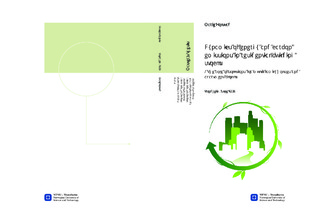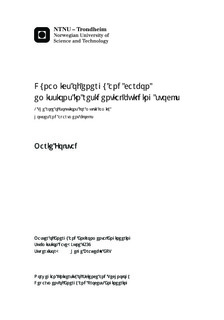| dc.description.abstract | Three building typologies are analyzed in this report, where the first one is apartment blocks built before 1956, the second one is apartment blocks built in the period 1956-1970, and the last typology is apartment blocks built in the period 1971-1980. A literature study of typical dwellings throughout time is completed and typical apartments from each of the time periods are defined. The model used to calculate the building s energy need for space heating and domestic hot water is based on the TABULA methodology, but is constructed as an energy balance model that uses the principles of a material flow analysis. This model is used to calculate the energy need before and after renovation. For each time period two building states are analyzed; original building state and historical refurbished building state. This is done since a big part of the buildings built before 1980 have already gone through some sort of renovation, and the energy saving potential by implementing new energy efficiency measures to these partly refurbished buildings are smaller than the energy saving potential for the same building types in original state. A life cycle costing model that uses the principles of net present value is used to calculate the economical output of each renovation package analyzed in this Master Thesis. A scenario model, that uses inputs from the segmented building stock model (see chapter 3.3.1) and the energy model (see chapter 3.1), is used to estimate the future energy need for space heating and domestic hot water for the part of the Norwegian dwelling stock analyzed in this report.The energy reduction potential for improving a typical building constructed before 1956 from original state to TEK10 level is 68 % for space heating. Improving it further down to a passive house level gives a reduction potential of 81 %, which shows that these buildings have a major improvement potential. Only a minority (16%) of the apartment blocks from this period are however in original state, which means that a more realistic reduction potential is seen from historical refurbished state to TEK10- or passive house level. The reduction potential for a TEK10-refurbishment is then 46 % and 67 % for a passive house refurbishment. For the two other building typologies the general pattern is that the energy savings decrease as the quality of the building in original and historical refurbished state improves. Apartment blocks built between 1971 and 1980 have the lowest saving potential since the quality before new renovation is high. This also makes these building types less economical efficient for different renovation projects. General it is shown that almost all renovations are efficient for apartment blocks built before 1956 and between 1956-1970 in original state, as these building types have the highest energy use before renovation. However, improving the building envelope to TEK10 or passive house level, as well as installing air-to-air heat pumps as supplementary measures are seen profitable for all the building types analyzed over a period of 36 years. Installation of a balanced ventilation system is only estimated to be profitable for apartment blocks built before 1956 and between 1956-1970 in original state. However, when upgrading the building envelope to passive house level it is recommended to install a balanced ventilation system to ensure a satisfactory air quality (Thomsen & Berge, 2012). Since there is high willingness to pay for comfort it is anticipated that installation of a balanced ventilation system combined with a passive house envelope upgrade is realistic for all building types even though the net present value is up to 400 NOK/m2 BRA higher than for base case (no energy-related upgrades to the building). | nb_NO |

